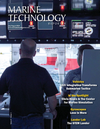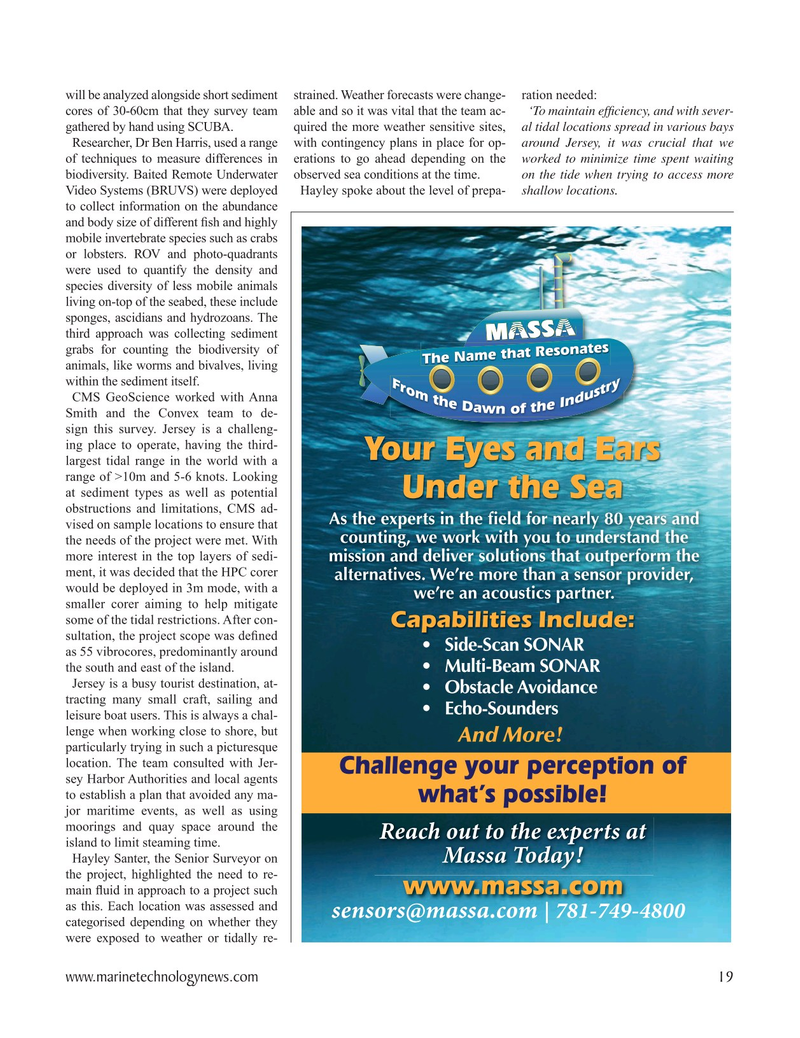
Page 19: of Marine Technology Magazine (July 2024)
Read this page in Pdf, Flash or Html5 edition of July 2024 Marine Technology Magazine
will be analyzed alongside short sediment strained. Weather forecasts were change- ration needed: cores of 30-60cm that they survey team able and so it was vital that the team ac- ‘To maintain ef? ciency, and with sever- gathered by hand using SCUBA. quired the more weather sensitive sites, al tidal locations spread in various bays
Researcher, Dr Ben Harris, used a range with contingency plans in place for op- around Jersey, it was crucial that we of techniques to measure differences in erations to go ahead depending on the worked to minimize time spent waiting biodiversity. Baited Remote Underwater observed sea conditions at the time. on the tide when trying to access more
Video Systems (BRUVS) were deployed Hayley spoke about the level of prepa- shallow locations.
to collect information on the abundance and body size of different ? sh and highly mobile invertebrate species such as crabs or lobsters. ROV and photo-quadrants were used to quantify the density and species diversity of less mobile animals living on-top of the seabed, these include sponges, ascidians and hydrozoans. The third approach was collecting sediment grabs for counting the biodiversity of animals, like worms and bivalves, living within the sediment itself.
CMS GeoScience worked with Anna
Smith and the Convex team to de- sign this survey. Jersey is a challeng- ing place to operate, having the third- largest tidal range in the world with a range of >10m and 5-6 knots. Looking at sediment types as well as potential obstructions and limitations, CMS ad- vised on sample locations to ensure that the needs of the project were met. With more interest in the top layers of sedi- ment, it was decided that the HPC corer would be deployed in 3m mode, with a smaller corer aiming to help mitigate some of the tidal restrictions. After con- sultation, the project scope was de? ned as 55 vibrocores, predominantly around the south and east of the island.
Jersey is a busy tourist destination, at- tracting many small craft, sailing and leisure boat users. This is always a chal- lenge when working close to shore, but particularly trying in such a picturesque location. The team consulted with Jer- sey Harbor Authorities and local agents to establish a plan that avoided any ma- jor maritime events, as well as using moorings and quay space around the island to limit steaming time.
Hayley Santer, the Senior Surveyor on the project, highlighted the need to re- main ? uid in approach to a project such as this. Each location was assessed and categorised depending on whether they were exposed to weather or tidally re- www.marinetechnologynews.com 19
MTR #5 (18-33).indd 19 7/23/2024 1:50:14 PM

 18
18

 20
20
